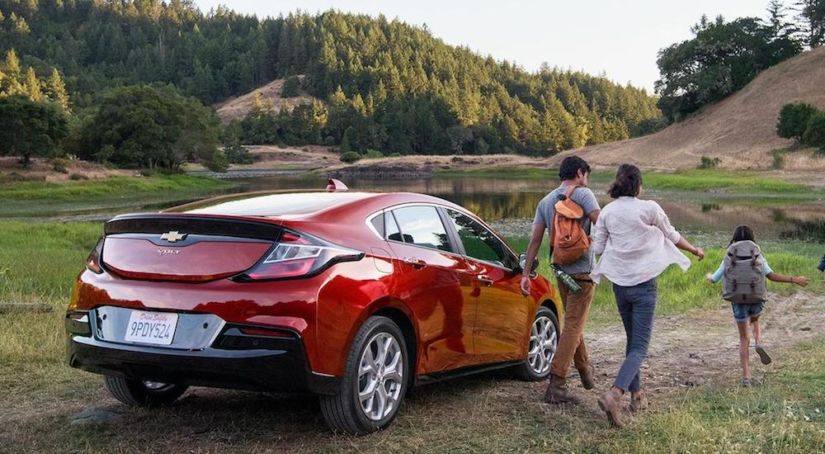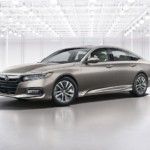When gas increases in price, it is easy to want something with better fuel efficiency to save money at the gas station. Whether it is the usual fluctuation of gas prices or tough times with skyrocketing rates, a vehicle with good gas mileage can save money and headache in the long run. Best of all, most of the major manufacturers are making vehicles with great fuel efficiency in different ways. The toughest challenge when you’re looking for a high-performing, fuel-efficient vehicle is knowing which one to choose. A part of the competition is the fact that new drivetrain technologies such as all-electric and hybrid vehicles have different ways of achieving the same results. That does not mean, however, that all fuel-efficient drivetrains are created equally. Many people prefer the range of a hybrid engine over all-electric vehicles since they rely on proven technology that has been around for decades. That is what makes a plug-in hybrid like the 2018 Chevy Volt such an attractive option. With the plug-in hybrid, you can have the best of both worlds in terms of great fuel efficiency and a normal amount of range. It helps to take some time to learn about plug-in hybrids to determine if this is the best choice for you and your next vehicle.
Understanding The Hybrid Approach
Decades ago, when hybrid technology became mainstream, many people were surprised at the philosophy of the overall approach manufacturers took to increase fuel efficiency. While everyone thought that all-electric vehicles would be the next natural step, notable manufacturers like Toyota saw something different: take the successful and reliable formula of standard combustion engines and combined them with the efficiency of an electric battery and motor. Together, you have the modern-day hybrid drivetrain.
There are actually several different types of hybrid engines used in mass production vehicles today. All of them, however, use an electric motor and battery to enhance or substitute the primary engine. When the combustion engine isn’t running, but the car still has the ability to go, you’re saving gas.
The challenge is keeping the electric motor running as it runs out of battery power. Many hybrid drivetrains use regenerative braking technology which recharges the battery from electricity generated from the brakes while the vehicle comes to a stop. Plug-in hybrids, often in combination with regenerative braking, can quickly charge up the battery to full while sitting in the garage overnight through a common wall outlet.
The 2018 Chevy Volt is a great example of the plug-in hybrid approach. It uses both an electric and combustion engine to offer a total range of around 450 miles before needing recharging and refueling. In the case of the Volt, it runs through the electric battery first before turning on the combustion engine. With the electric motor alone, you can expect to get up to 100 miles in range before this happens.
Benefits Of A Plug-In Hybrid
The most important advantage to a plug-in hybrid is the greater fuel efficiency you can expect. It is not uncommon for many plug-in hybrids, including the Chevy Volt, to get upwards of 50 miles per gallon. In terms of fuel efficiency, this is another level entirely compared to the typical 20 to 30 mile per gallon range of modern combustion vehicles. The fuel efficiency is not the only thing you can look forward to with a plug-in hybrid, however.
Electric motors are much more efficient than standard combustion engines and drivetrains. This is because they can apply their horsepower into torque almost instantaneously. Whereas typical cars require some acceleration and gear shifting to get up to peak efficiency, you have this instant torque available to you the moment you step on the gas pedal.
Hybrid vehicles that can rely solely on the electric motor tend to be much quieter as well. This can create an enjoyable driving experience as you ride around town or out on the highway. If you happen to want the roar of an engine, some plug-in hybrids even give you the feature of switching between the two options at will.
Uses For A Plug-In Hybrid
Unlike pure electric vehicles, which are limited in range, plug-in hybrids are great for many different uses and driving styles. In fact, any type of driving you can do with a normal car or SUV is perfect for a plug-in hybrid as well.
Many people buy a plug-in hybrid as their daily commuter. If your daily drive is less than 80 miles each day, you can theoretically use something like the Chevy Volt without having to fill up on a regular basis. Even longer trips will cut down on visits to the gas station due to the better fuel efficiency and greater range of the hybrid.
The real magic of a plug-in hybrid comes during long road trips. If you ever wanted a way to get across the country without having to stop at a gas station every few hundred miles, a plug-in hybrid is a great way to do just this. In fact, the plug-in hybrid technology has certain advantages over hybrids with regenerative braking alone. Without plugging in, a hybrid tends to suffer in highway performance since it doesn’t have the constant stops it requires to recharge the battery. Since a plug-in hybrid can charge from an outlet, this essentially will give you a boost of free energy before the main engine has to kick in, improving highway fuel efficiency.
Ultimately, a plug-in hybrid is just like any other vehicle: its usefulness depends on what you need from your next car. If you want the maximum amount of fuel efficiency and range from your vehicle, a plug-in hybrid is the perfect choice. You can also get a lot of the advanced features and safety systems just like any other car. In other words, there aren’t too many sacrifices you have to make when buying a plug-in hybrid unless you need a larger vehicle with a lot of passenger and cargo room.
For everyday needs, the plug-in hybrid is the perfect vehicle in most cases.



